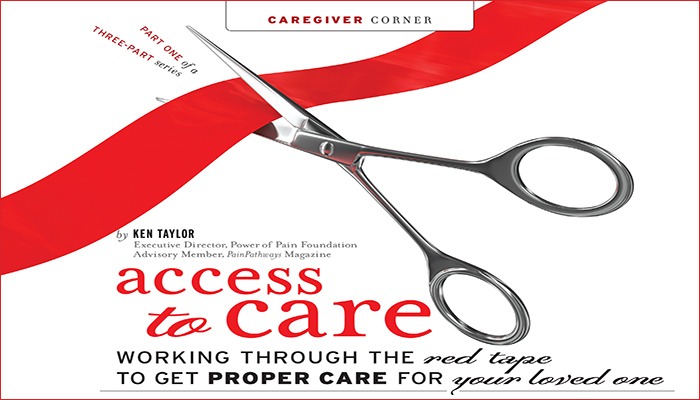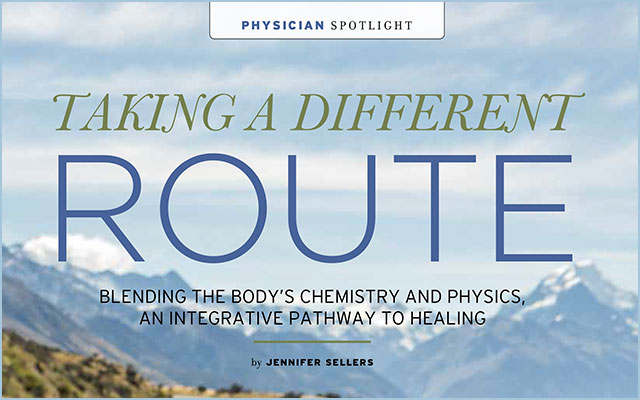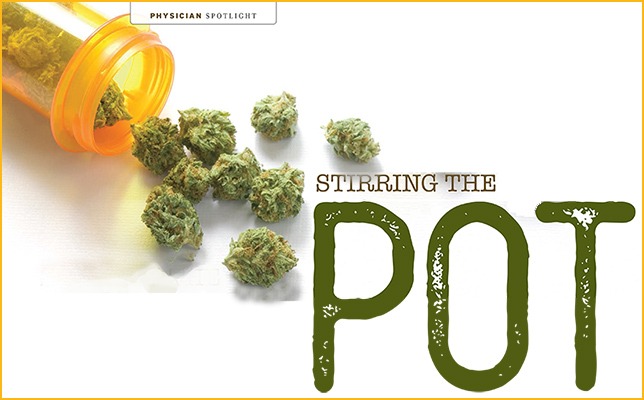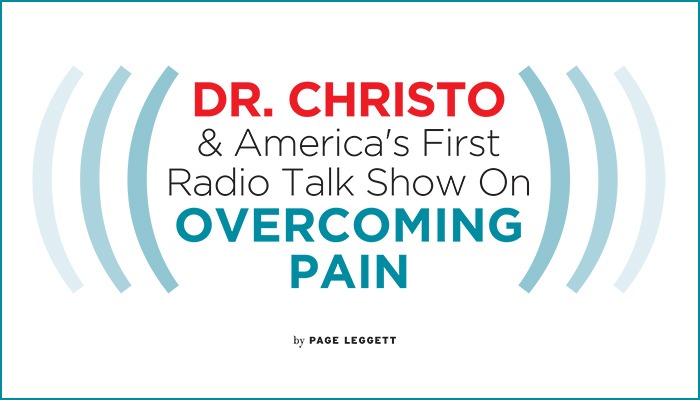Invisible Pain
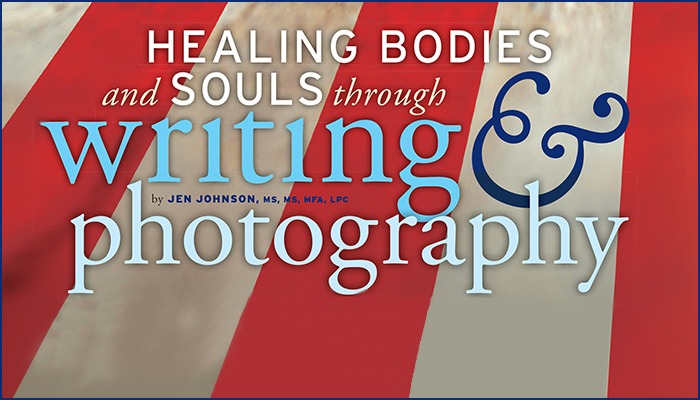
Writing with a fountain pen and viewing the world through my camera lens is like a soothing balm for my body and soul. Writing and photography have helped me to heal and have changed my life and my work as a psychotherapist. When I write and make photographs about my own invisible pain, it helps me to create order from chaos and make meaning from the pain in a way that talking can’t.
Nearly twenty years ago, my mother became addicted to prescription opioids and benzodiazepines, relapsed with alcoholism, attempted suicide, and three years later died from lung cancer. Few people realized the depth of my mother’s invisible pain or our family’s invisible pain in response to her experience. I began writing to understand our experience and made photographs in the moments when language failed.
Many of the photographs were landscapes with fog. Writing and photography brought such deep healing for me that I incorporated them into my work to assist clients in coping more effectively with their own invisible pain. It’s powerful work.
HEALING POWER OF THE PEN
The art and science of writing for healing have been recognized for quite some time. In 1942, American psychologist Gordon Allport published The Use of Personal Documents in Psychological Science, which encouraged the use of diaries and journals in clinical practice. Research dating back to the 1980s suggests that writing is healing. In Expressive Writing: Words that Heal, Pennebaker & Evans write that although people report feeling sad soon after emotional writing, long term they report feeling happier and experiencing fewer symptoms of depression, anxiety, and rumination (p.11). Studies have also shown improvements in overall well-being and cognitive functioning, emotion regulation, and resiliency with expressive writing (Pennebaker & Evans 9-11).
PHYSICAL BENEFITS OF WRITING
Writing can result in positive physical effects, including general enhancement of immune functioning, decreased stress, and lower blood pressure and heart rates. Expressive writing with asthma patients and rheumatoid arthritis patients resulted in improved lung function and joint mobility; AIDS patients showed increases in white blood cell counts; patients with irritable bowel syndrome showed a significant reduction in the severity of the illness; cancer patients showed reduced pain, improved sleep and improved functioning; and lupus patients reported decreased fatigue (Pennebaker & Evans p. 10). A recent study at the University of Auckland in New Zealand showed that expressive writing can speed physical wound healing in older adults and women.
DETAILS: HOW AND WHY THEY TRANSFORM US
Writing as a Way of Healing: How Telling Our Stories Transforms Our Lives, by Louise DeSalvo, draws on Pennebaker’s research and emphasizes that the only kind of writing about the trauma that has been clinically associated with improved health is writing about the details of the traumatic events and then writing about how one felt then and how one feels about the events now.
DeSalvo suggests that the transformative qualities to aim for when writing a healing narrative include writing concretely and authentically in detail about the experience; using negative words in moderation when describing emotions and feelings, balanced with positive words; writing about how the experience has affected our lives and writing a complete and coherent story.
Many people experience invisible physical and emotional pain due to trauma. Growing evidence suggests that during traumatic events, when we experience states of high sympathetic nervous system arousal related to the stress response, our capacity to encode memory with language is deactivated, and our central nervous system reverts back to sensory memory or visual memory—more characteristic of how we encode memory prior to learning how to speak and process language (van der Kolk). This explains why sometimes we simply do not have words to express how we feel following a highly stressful event. Writing and photography allow us to more easily express the details of a sensory and visual memory of our experience. Judy Weiser, the author of PhotoTherapy Techniques, writes that using photography as a therapeutic tool “can reach those nonverbal, and primarily visual, components of our unconscious domains” (p. 8).
WHAT IS NARRATIVE WRECKAGE?
Medical sociologist Arthur Frank, Ph.D., has written extensively about illness narratives, and I find that his work generalizes well to most people who are suffering from any type of invisible pain. Frank believes that illness or injury is a call for a story. When become lost in what Frank describes as the “narrative wreckage,” and “the way out of the wreckage is telling stories” (p. 55).
A POSTMODERN VIEW OF ILLNESS AND NARRATIVE
Frank describes the modern view of illness as experience being taken over by technical expertise and organizations of treatment. In the modern experience of illness, the story of illness is the medical narrative—the story told by the physician against which all other stories are measured as true or false. Frank states, “the postmodern experience of illness begins when ill people recognize that more is involved in their experiences than the medical story can tell” (p. 6). Frank states that “the possibility, even the necessity, of ill people telling their own stories has been set in place by the same modernist medicine that cannot contain these stories” (p. 8).
RESTITUTION NARRATIVE
Frank describes three types of illness narratives that can be easily applied to any type of invisible pain: restitution narrative, chaos narrative, and quest narrative. An example of a restitution narrative is “Yesterday I was healthy, today I am sick, but tomorrow I’ll be healthy again” (p. 77), and Frank states that this is the preferred narrative of the institution of medicine (p. 79). But people with invisible pain face the possibility of ongoing invisible pain and don’t t neatly into the medical establishment’s model for a cure. A model for healing from invisible pain is called for, with healing being restoring a sense of wholeness whether a cure happens or not. Writing and photography can facilitate that process.
CHAOS NARRATIVE
The chaos narrative is difficult for the teller to put into words, simply because it feels internally chaotic. An example of a chaos narrative is “this happened, and then this happened … and then … and then … ” Chaos narratives usually provoke anxiety in the listener (p. 97). In my experience, many health care providers may find it difficult to tolerate a person’s chaotic narrative and often interrupt the story. “Hearing is difficult not only because listeners have trouble facing what is being said as a possibility or a reality in their own lives. Hearing is also difficult because the chaos narrative is probably the most embodied form of the story” (p. 101). In addition, today’s insurance-based model of health care often does not allow time for deep listening to the patient or client’s story.
When we rush the client to move out of the chaos, we deny what is happening in their experience, which often increases their internal chaos. Chaos narratives are frequently labeled as anxiety or depression and are treated with medication, but what is most often called for is deep listening and bearing witness to the chaos narratives. Writing and photography can be tremendously helpful for someone who is living within the framework of a chaos narrative, as it can help them to tell the story in a more cohesive manner that creates order from chaos.
QUEST NARRATIVE
The third type of narrative is the quest narrative. An example of a quest narrative is “I want to use my experience to help others.” When a person embodies this phase of their story, it is often about confronting suffering directly, learning to balance hope with acceptance, making meaning from invisible pain, and attempting to use the experience for some greater purpose in the world. Writing and photography can facilitate the shift from a chaos narrative insight and a shift in perspective.
We all have invisible pain. It’s impossible to go through life without being wounded in some way, yet many of us get stuck in isolation and shame. Sharing stories, with a friend, partner, or therapist or by publishing our words and photographs, allows us to step out of the shame and connect with others.
I like to imagine a world in which we all share our stories of invisible pain and the whole world begins to heal, one story at a time.
JEN JOHNSON, MS, MS, MFA, LPC, is a mindfulness teacher, counselor, photographer, and writer offering an integrative approach to healing, and director of the Invisible Wounds of War project. She offers online workshops for healing through writing and photography and is also accessible via phone and Skype.
PainPathways Magazine
PainPathways is the first, only and ultimate pain magazine. First published in spring 2008, PainPathways is the culmination of the vision of Richard L. Rauck, MD, to provide a shared resource for people living with and caring for others in pain. This quarterly resource not only provides in-depth information on current treatments, therapies and research studies but also connects people who live with pain, both personally and professionally.
View All By PainPathways


